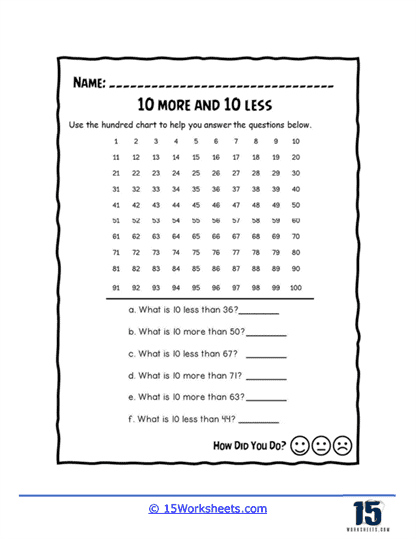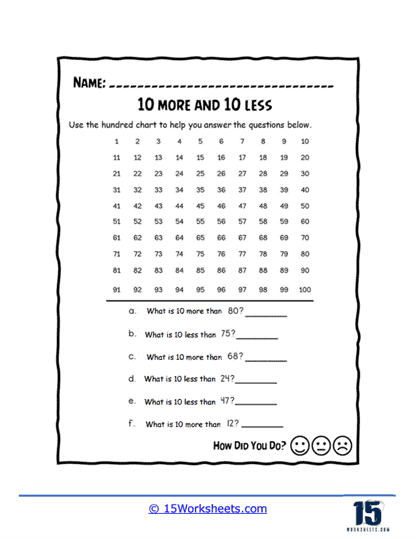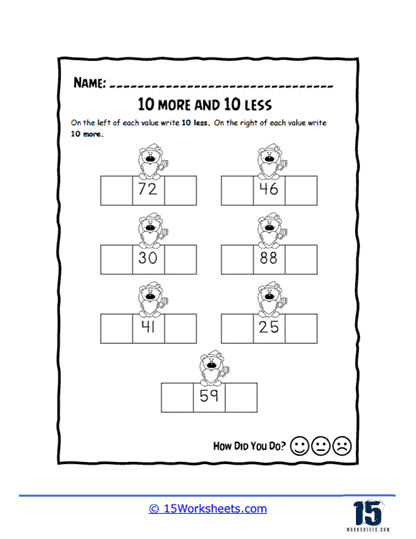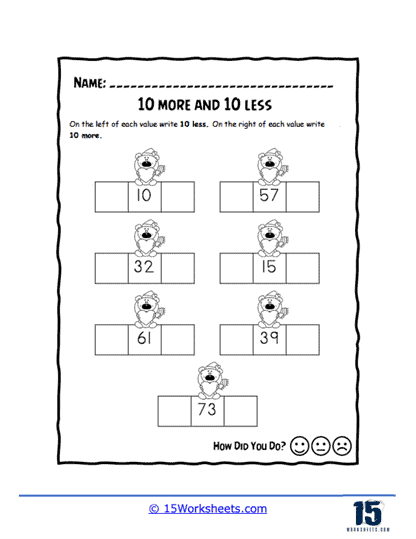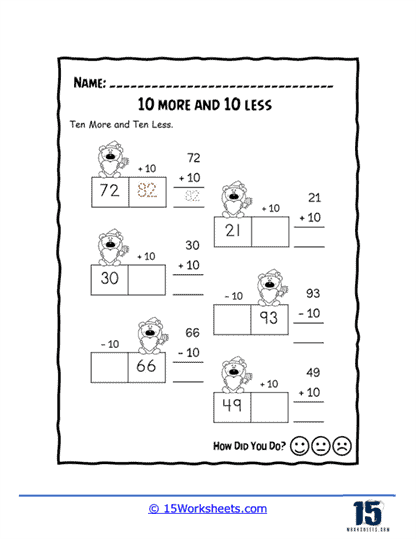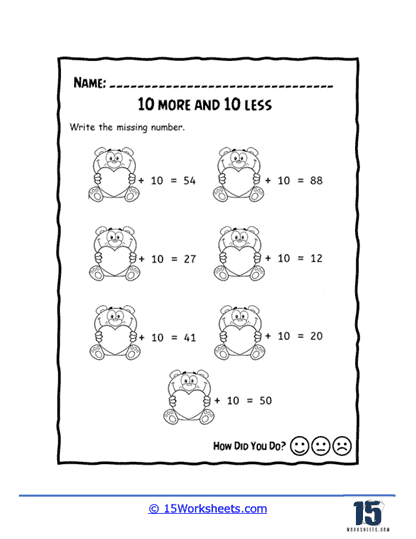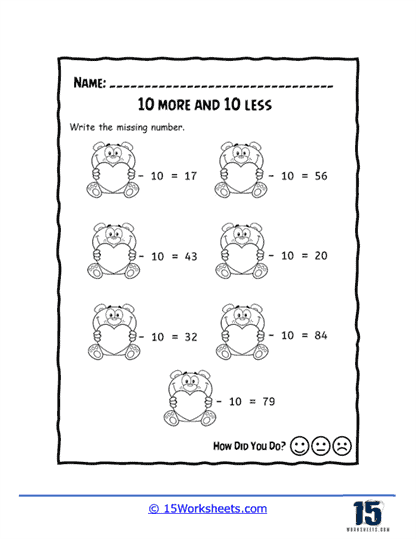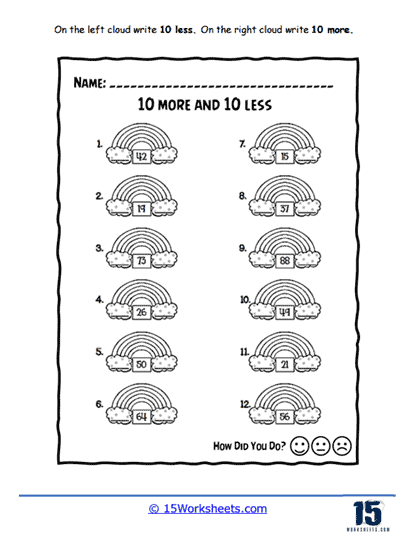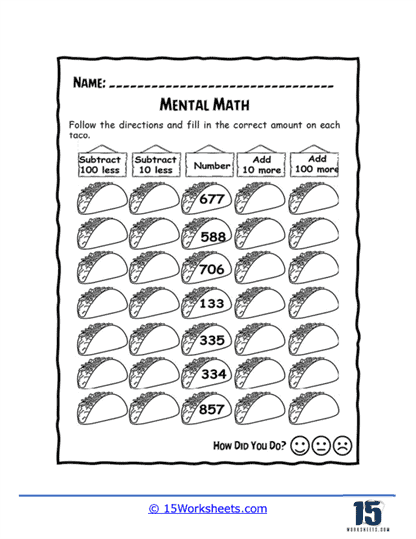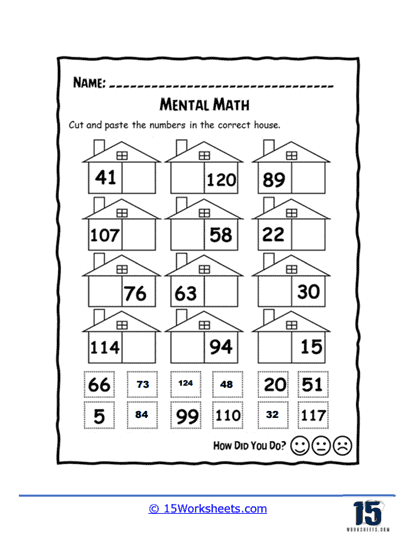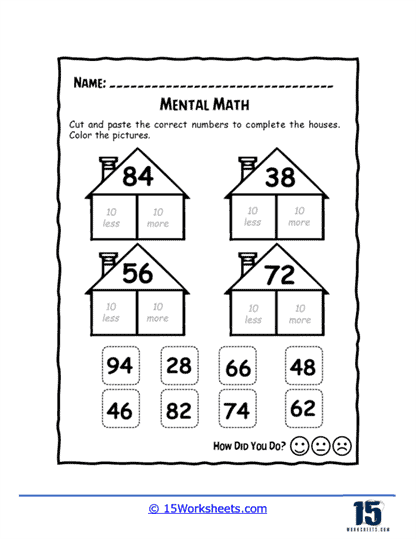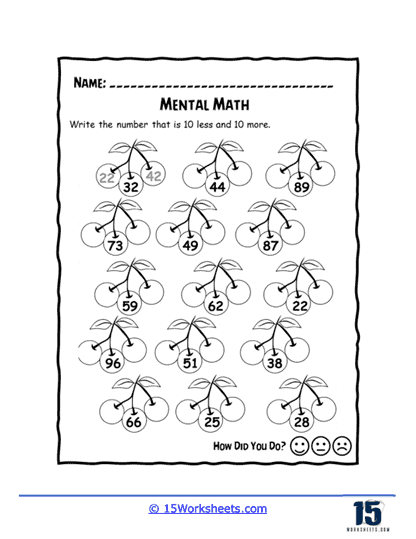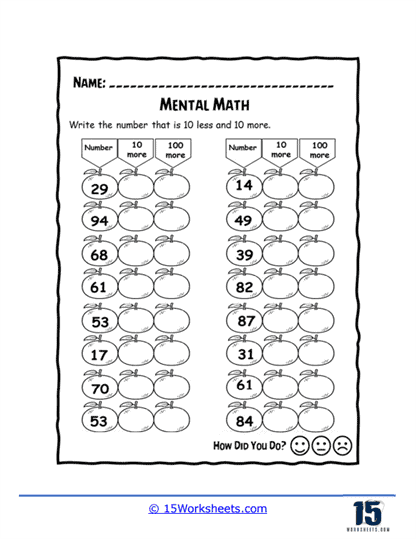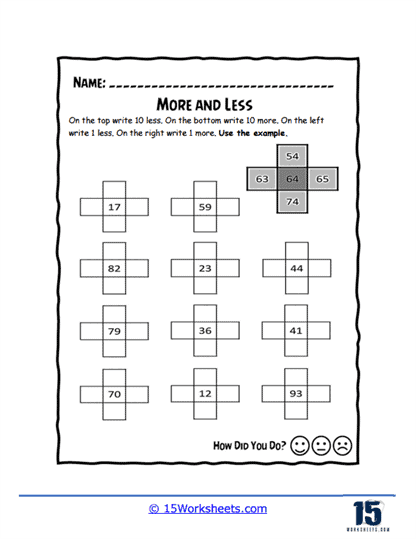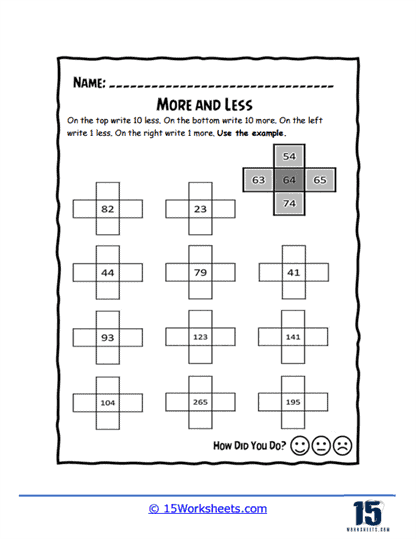10 More or Less Worksheets
What Are 10 More or Less Worksheets?
These worksheets will help children develop their number sense and improve their ability to count and understand the concept of addition and subtraction by tens. These worksheets feature activities and exercises that ask children to identify numbers that are ten more or ten less than a given number.
They mostly come in the form of simple math problems, such as “what is ten more than 45?” or “what is ten less than 80?”. These worksheets often include visual aids, such as illustrations or images of objects, to help children count and understand the concept of adding or subtracting by tens.
These worksheets will help students set on the path of udnerstanding the concept of base ten numbers. In the base ten system, we have ten digits: 0, 1, 2, 3, 4, 5, 6, 7, 8, and 9. These digits are like building blocks that we use to create all the numbers. Just like how we use bricks to build houses, we use these digits to build numbers!
The position of each digit is really important in base ten numbers. We have different places like ones, tens, hundreds, and so on. The position tells us how much each digit is worth. The rightmost position is the ones place, the next position to the left is the tens place, and it keeps going like that.
Let’s take the number 352 as an example. The digit 2 is in the ones place, the digit 5 is in the tens place, and the digit 3 is in the hundreds place. So, when we read the number 352, we say “three hundred fifty-two.” Each digit’s position helps us understand its value.
The base ten system is important because it makes it easy for us to understand and work with numbers. It allows us to count and group things efficiently. For example, if you have 3 groups of 10 apples each, you can easily see that you have 30 apples in total.
The base ten system is the foundation for many other mathematical concepts we learn, like addition, subtraction, multiplication, and division. It helps us understand how numbers relate to each other and how we can manipulate them.
So, base ten numbers are a special way we use to write and understand numbers using ten digits and different positions. It helps us work with numbers easily and do all sorts of math operations.
Teaching the math concept of 10 more or less can be done using various methods. Here are some strategies you can use:
Using Manipulatives – Manipulatives such as base ten blocks or counting bears can be used to demonstrate the concept of adding or subtracting by tens.
Number Charts – Number charts are a great visual aid to help students understand the concept of 10 more or less. Use a number chart to show students how to add or subtract by tens.
Counting on Fingers – Encourage students to count on their fingers by tens. This helps them visualize the concept of adding or subtracting by tens.
Songs and Rhymes – Using catchy songs and rhymes can help students learn the concept of 10 more or less in a fun and engaging way.
Real-life Examples – Point out real-life examples of 10 more or less, such as adding ten more minutes to a timer or taking away ten dollars from a budget.

